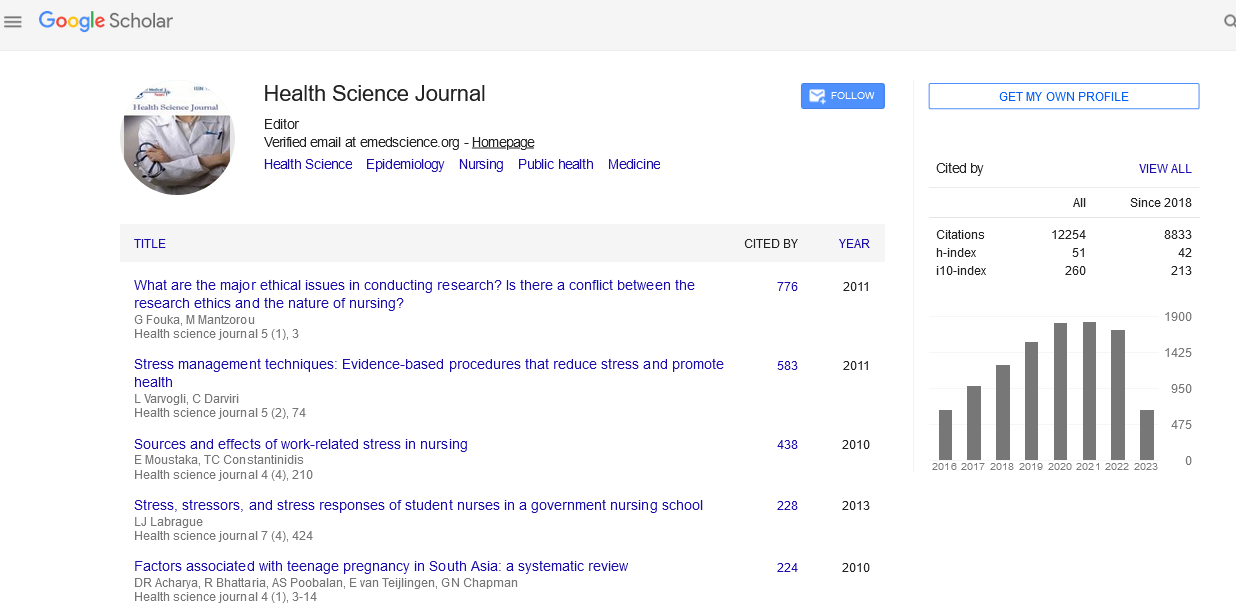Editorial - (2024) Volume 18, Issue 12
Gut Microbiota’s Role in Non-Communicable Diseases (NCDs) in Low-Income Countries
Zhenyu Jian*
Department of Health Science, National University of Singapore, Singapore
*Correspondence:
Zhenyu Jian, Department of Health Science, National University of Singapore,
Singapore,
Email:
Received: 01-Dec-2024, Manuscript No. Iphsj-24-15448;
Editor assigned: 04-Dec-2024, Pre QC No. Iphsj-24-15448 (PQ);
Reviewed: 26-Dec-2024, QC No. Iphsj-24-15448;
Revised: 28-Dec-2024, Manuscript No. Iphsj-24-15448 (R);
Published:
31-Dec-2024, DOI: 10.36648/1791-809X.18.12.1209
Abstract
Non-communicable diseases (NCDs), including cardiovascular diseases, diabetes, obesity, and cancer, are increasingly prevalent in low-income countries (LICs), posing significant challenges to public health. The role of gut microbiota in the development and progression of these diseases has gained attention in recent years, as evidence suggests that an imbalance in the gut microbiome may contribute to inflammation, metabolic dysfunction, and other pathophysiological mechanisms that underlie NCDs. This article explores the relationship between gut microbiota and NCDs in LICs, focusing on the unique challenges these countries face in terms of diet, sanitation, and healthcare. By highlighting current research and potential mechanisms, the article underscores the need for greater attention to gut health in addressing the rising burden of NCDs in low-resource settings.
Introduction
Non-communicable diseases (NCDs) are now the leading cause of mortality worldwide, responsible for more than 70% of global deaths [1]. While high-income countries (HICs) have long experienced high rates of NCDs, the prevalence of these diseases is rapidly increasing in low-income countries (LICs). The World Health Organization (WHO) reports that NCDs are expected to account for 80% of deaths in LICs by 2030, with cardiovascular diseases, diabetes, and cancer being the most prominent [2]. Several factors contribute to this growing burden, including changes in diet, lifestyle, and urbanization. Emerging research suggests that gut microbiota—a complex community of microorganisms residing in the gastrointestinal tract—may play a critical role in the pathogenesis of NCDs. Dysbiosis, an imbalance in the gut microbiota, has been linked to various metabolic and inflammatory conditions that underlie NCDs, such as obesity, diabetes, and cardiovascular diseases [3]. This article explores the potential role of gut microbiota in NCDs in LICs, with a focus on the factors that may influence the gut microbiome in these populations and the implications for public health.
The Gut Microbiota and NCDs
The gut microbiota is essential for maintaining human health, influencing various physiological processes, including digestion, metabolism, immune function, and inflammation. An imbalance in this microbial community—dysbiosis—has been associated with a range of non-communicable diseases, particularly metabolic disorders such as obesity and diabetes [4]. Studies have shown that the gut microbiome in individuals with these conditions differs from that of healthy individuals, suggesting that microbial composition may influence disease progression. In LICs, where dietary patterns are rapidly changing due to urbanization and the adoption of more Westernized eating habits, the gut microbiota may be particularly vulnerable. Traditional diets rich in fiber and fermented foods are being replaced by processed foods high in sugar, fat, and salt, which may alter the composition of gut bacteria in ways that promote inflammation and insulin resistance [5]. For example, a study by Jahan et al. (2020) found that a high intake of processed foods in Bangladesh was associated with gut dysbiosis and increased markers of systemic inflammation, which are known to contribute to NCDs [6]. Moreover, sanitation and hygiene conditions in LICs also play a critical role in shaping the gut microbiome. Poor sanitation and limited access to clean water can expose individuals to pathogenic bacteria, leading to gut inflammation and dysbiosis. This can increase susceptibility to conditions such as inflammatory bowel disease (IBD) and metabolic disorders [7].
Mechanisms Linking Gut Microbiota to NCDs
The gut microbiota influences the development of NCDs through several mechanisms, including regulation of the immune system, modulation of metabolism, and the production of bioactive compounds. One of the primary mechanisms is the regulation of inflammation. Dysbiosis has been shown to increase intestinal permeability, allowing endotoxins such as lipopolysaccharides (LPS) to enter the bloodstream and activate systemic inflammation. Chronic low-grade inflammation is a hallmark of several NCDs, including atherosclerosis, insulin resistance, and obesity [8]. In addition to inflammation, the gut microbiota plays a central role in metabolism. Certain bacterial species can ferment dietary fibers to produce short-chain fatty acids (SCFAs), such as butyrate, which have anti-inflammatory and insulin-sensitizing properties [9]. In LICs, however, diets that are low in fiber and high in processed foods may limit the production of SCFAs, thereby exacerbating metabolic dysfunction. Furthermore, the gut microbiome influences lipid metabolism and glucose homeostasis, both of which are key factors in the development of type 2 diabetes and cardiovascular disease [10].
Gut Microbiota and the Impact of Diet in Low-Income Countries
Diet is one of the most important factors influencing gut microbiota composition. In LICs, rapid urbanization and changes in dietary habits have led to an increased consumption of processed foods, which are often low in fiber and high in sugars and fats. These dietary changes have been shown to negatively affect gut microbiota diversity, promoting the growth of harmful bacteria that contribute to the development of NCDs. A study in India by Gupta et al. (2019) highlighted the impact of the Westernization of diets on the gut microbiota, with participants consuming higher levels of sugars and fats showing decreased microbial diversity and increased markers of metabolic syndrome. In contrast, traditional diets in LICs often include fermented foods such as yogurt, pickles, and kefir, which have been shown to support the growth of beneficial gut bacteria. However, as these foods become less common in urban areas, the gut microbiome may be further compromised. Additionally, food insecurity and malnutrition in LICs can also impact gut health. Poor nutrition, particularly the lack of essential micronutrients such as zinc and vitamin D, can lead to gut dysfunction and contribute to the development of NCDs. This is particularly concerning in children and adolescents, who may face long-term consequences for metabolic health due to the underdevelopment of the gut microbiota in early life.
Implications for Public Health in Low-Income Countries
The growing burden of NCDs in LICs highlights the need for a comprehensive approach to public health that includes gut health as a key factor. Improving access to healthy foods, promoting traditional diets rich in fiber and fermented products, and addressing sanitation and hygiene issues are essential strategies for preventing NCDs related to gut microbiota imbalances. Public health initiatives should focus on education about the importance of nutrition and gut health. In LICs, where access to healthcare and nutrition information may be limited, raising awareness about the link between diet, gut microbiota, and NCDs could help empower individuals to make healthier choices. Furthermore, interventions to improve sanitation and hygiene could reduce the exposure to pathogenic bacteria that contribute to dysbiosis and inflammation. There is also a need for more research into the gut microbiota of populations in LICs. Many of the studies linking gut microbiota to NCDs have been conducted in high-income countries, and there is limited data on how these mechanisms play out in low-resource settings. Longitudinal studies in LICs could provide valuable insights into how diet, sanitation, and other environmental factors interact with gut microbiota to influence the development of NCDs.
Conclusion
Gut microbiota plays a crucial role in the development and progression of non-communicable diseases, particularly in low-income countries where dietary patterns and sanitation conditions are rapidly changing. Dysbiosis, driven by factors such as poor diet and inadequate sanitation, contributes to inflammation, metabolic dysfunction, and other pathophysiological processes underlying NCDs. Addressing the role of gut health in public health strategies, with a focus on improving diet, sanitation, and education, is essential for mitigating the rising burden of NCDs in LICs. Further research is needed to better understand the specific impact of gut microbiota on NCDs in low-resource settings.
References
- Kyriakou G, Glentis A, Papanikolaou S (2021) Widow’s peak a usually overlooked, yet significant morphogenetic trait. JDDG J German Soc Derma 19: 1271-1275.
Indexed at, Google Scholar, Crossref
- Lane RD, Caruso AC, Brown VL, Axelrod B, Schwartz GE, et al. (1994) Effects of non-right-handedness on risk for sudden death associated with coronary artery disease. American J Card 74: 743-747.
Indexed at, Google Scholar, Crossref
- Manning JT, Scutt D, Wilson J, Lewis-Jones DI (1998) the ratio of 2nd to 4th digit length: a predictor of sperm numbers and concentrations of testosterone, luteinizing hormone and oestrogen. Human Reproduction 13: 3000-3004.
Indexed at, Google Scholar, Crossref
- Mu L, Sanders I (2010) Human tongue neuro anatomy: Nerve supply and motor endplates. Clinical Anatomy 23: 777-791.
Google Scholar, Crossref
- Nissimov JN, Chaudhuri AB (2014) Hair curvature a natural dialectic and review. Biological Reviews 89: 723-766.
Crossref
- Odokuma EI, Eghworo O, Avwioro G, Agbedia U (2008) Tongue Rolling and Tongue Folding Traits in an African Population. Int J Morphology 26: 533-535.
Google Scholar, Crossref
- Previc FH (1996) No right‐handedness, central nervous system and related pathology, and its lateralization: A reformulation and synthesis. Dev Neur 12: 443-515.
Indexed at, Google Scholar, Crossref
- James V, Corino G, Robertson T, Dutton N, Halas D, et al. (2005) Early diagnosis of breast cancer by hair diffraction. Int J Cancer 114: 969-972.
Google Scholar, Crossref
- Kappert KD, Dijk S, Wellenstein D, Alphe MJ, Son RJ, et al. (2021) Five Specific Tongue Movements in a Healthy Population. Dysphagia 36: 736-742.
Indexed at, Google Scholar, Crossref
- Krishan K, Kanchan T, Thakur SA (2019) Study of morphological variations of the human ear for its applications in personal identification.
Indexed at, Crossref
Citation: Jian Z (2024) Gut Microbiota’s Role in Non-Communicable Diseases (NCDs) in Low-Income Countries. Health Sci J. Vol. 18 No. 12: 1209.





